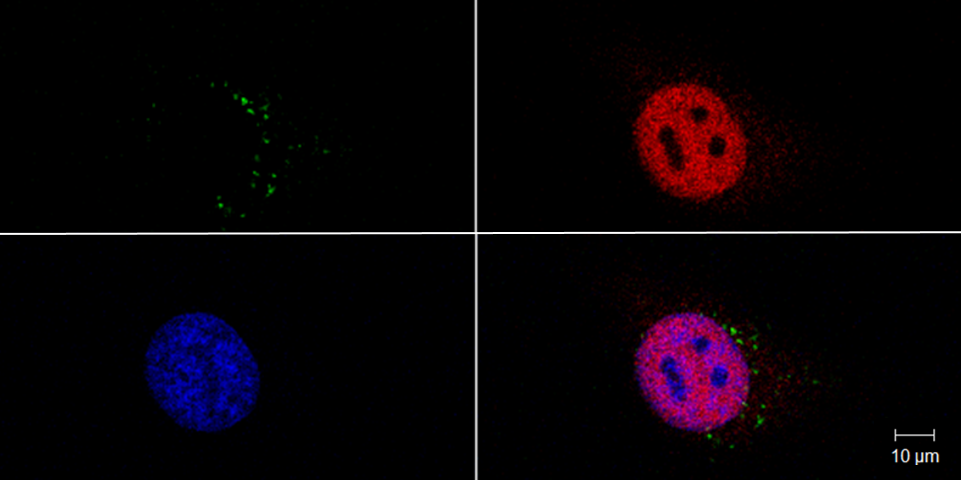
© A. S. Stolle

© B. Grabowski


Effector proteins can also enter host cells in a type III secretion system (T3SS)-independent manner thereby widening their potential functional range to modulate cellular barriers. In this regard, we identified the entire group of bacterial leucine-rich repeat (LPX) effector proteins as so far unknown cell-penetrating effector proteins (CPE), which provided further evidence for a general concept of T3SS-independent translocation. Now we will elucidate the effects of this novel class of CPE in modulating immune responses in cell-culture and animal models and explore potential therapeutic applications of these CPE.
Research area: Infection biology
Dr. rer. nat. Christian Rüter (since 07/2016)
Funding period: July 2012 - June 2020
Original articles
Bielaszewska M, Greune L, Bauwens A, Dersch P, Mellmann A, Rüter C (2021) Virulence Factor Cargo and Host Cell Interactions of Shiga Toxin-Producing Escherichia coli Outer Membrane Vesicles. Methods Mol Biol 2291:177-205
Chaoprasid P, Lukat P, Mühlen S, Heidler T, Gazdag EM, Dong S, Bi W, Rüter C, Kirchenwitz M, Steffen A, Jänsch L, Stradal T, Dersch P, Wulf Blankenfeldt W (2021) Crystal structure of full-length cytotoxic necrotizing factor CNFY reveals molecular building blocks for intoxication. EMBO J 7:e105202
Rüter C, Bielaszewska M (2020) Secretion and Delivery of Intestinal Pathogenic Escherichia coli Virulence Factors via Outer Membrane Vesicles. Front Cell Infect Microbiol 10: 91
Baumann D., Salia H., Greune L., Norkowski S., Körner B., Uckeley Z.M., Frankel G., Guenot M., Rüter C., Schmidt M.A. (2018) Multitalented EspB of enteropathogenic E. coli (EPEC) enters cells autonomously and induces programmed cell death in THP-1 cells. Int. J. Med. Microbiol. 308:387–404.
GomarascaM., MartinsT.F.C., Greune L., Hardwidge P.R., Schmidt M.A., and RüterC. (2017) Bacterium-derived CPP deliver gentamicin to kill intracellular pathogens. Antimicrob. Agents Chemother. 61(4):e02545-16.
Reviews